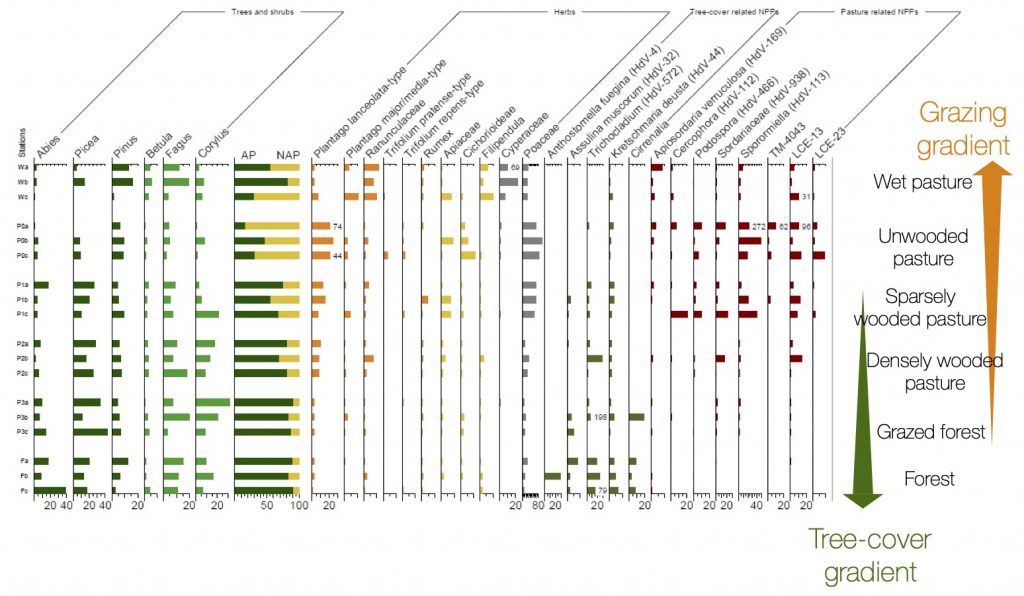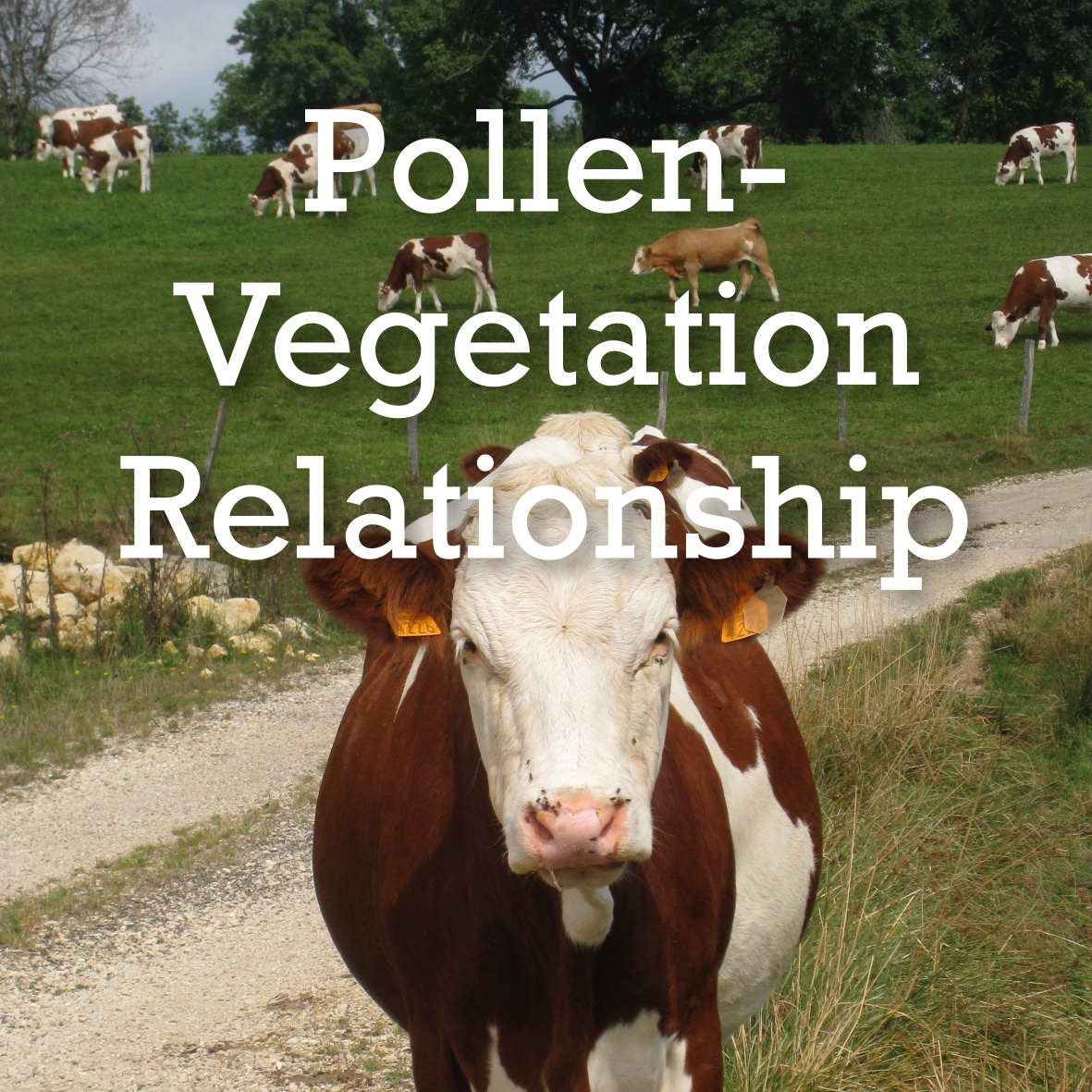The project’s storyline
Emilie Gauthier (University Bourgogne-Franche-Comté, France) offered to me to take part in a scientific project during my Master studies. The project she designed aimed at investigating the relationships between the actual vegetation of pasture woodlands in the Jura Mountains, and the pollen rain they produce. The objective was to determine to which degree the pollen representation of a vegetation is reliable. This knowledge will in turn help to interpret data from palaeo-records in the region.
With the help of François Gillet (University Bourgogne-Franche-Comté, France), I first made vegetation relevés in several stations, following a forest/pasture gradients. I determined the percentage of cover and Braun-Blanquet indices of each species in 20 x 20 m2 plots. From the same plots, I sampled mosses and dungs. Emilie identified the pollen contained in those samples, and I identified the non-pollen palynomorphs (NPPs), with a particular interest for spores of coprophilous fungi.

Using a redundancy analysis, we found out that the grazing and tree-cover gradients have a significant effect on pollen and NPP assemblages. It suggests that particular taxa can be used as indicators for grazing pressure and tree-cover.
Outcome
The results from this project were presented during the 4th NPP Workshop in Besançon in 2010, and have been published in Review of Palaeobotany and Palynology in 2012.
Dietre B, Gauthier É and Gillet F (2012). Modern pollen rain and fungal spore assemblages from pasture woodlands around Lake Saint-Point (France). Review of Palaeobotany and Palynology 186, 69–89. 10.1016/j.revpalbo.2012.07. 002
